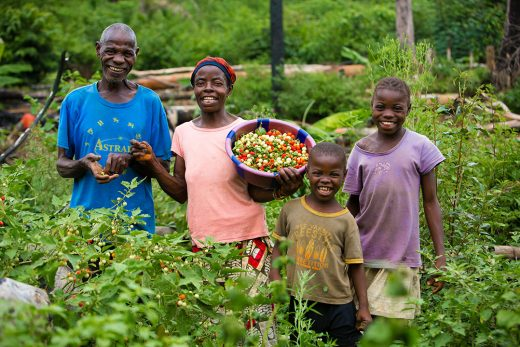On November 30, 1961, the United States Agency for International Development (USAID) was born with the help of President John F. Kennedy. President Kennedy recognized "the need to unite development into a single agency." Created to provide international development and humanitarian aid, the Ukraine crisis as an example, USAID's values and missions are:
- "to foster sustainable development & advance human dignity globally"
- to work for "effective & meaningful results"
- hold accountability
- respect others, partners, and people being served
- "elevate all voices striving for global economic, environmental, and social progress"
- value differences & diversity
- work on improvement through reflection & evaluation
USAID Transforms, a video from USAID, explains more; watch it below.
USAID works in various sectors to "transform families, communities, and countries - so they can thrive and prosper." The purpose of foreign aid is that it "should be ending the need for its existence." Below, three sectors that USAID works within are highlighted.
USAID educates communities on the need of reliable sources of food and delivers resources to these individuals to produce and purchase those sources. If USAID can address "the root causes of hunger," they can create growth within that community. This being said, agriculture and food security go hand in hand. With the majority of individuals who go to bed hungry being "small holder farmers who depend on agriculture," investing in these farmers is crucial and a plan that will work. If agriculture grows, it's "at least twice as effective in reducing poverty."
USAID follows the guidance of the U.S. Government Strategy on International Basic Education to "achieve a world where education systems in partner countries enable all individuals to acquire the education and skills needed to be productive members of society." The USAID Education Policy prioritizes children and youth's access to quality education, increases in literacy, numeracy, and social-emotional skills, skills that lead to productive lives, and to have higher education institutions.
Through their efforts, USAID has given more than 24 million children and youth access to education, trained more than 300,000 officials, teachers, and administrators, assisted more than 93,000 public and private schools, and provided more than 580 higher education institutions with capacity development support.
USAID's humanitarian assistance is the leader for international disaster assistance. USAID responds to crises in more than 70 countries including Venezuela, South Sudan, Philippines, Australia, and Bolivia. The humanitarian assistance UISAID provides includes food, water, shelter, emergency healthcare, sanitation, and critical nutrition services. USAID has worked heavily in assisting countries affected by COVID-19, as well.
USAID has remained committed to "supporting Ukraine and its people in this current crisis." The Disaster Assistance Response Team was deployed to the region to support the Ukrainian people and address critical needs. Along with the Response Team, USAID is helping collect cash donations to various relief organizations. Their site offers information and resources of refugees and asylum-seekers. There's information for U.S. citizens in Ukraine, refugees and asylum-seekers in Ukraine, and a hotline for migrants in Ukraine.
USAID states that the agency is "focused on results," which is why they choose to use data for transparency and accountability. USAID releases weekly reports and publications that highlight what USAID has been working on. For example, a publication that's been released in "Shared Interest: How USAID Enhances U.S. Economic Growth."
To view data by recipient country, visit ForeignAssistance.gov.
There are also various reports available like a Customer Service Plan, Open Government Plan 2.0, and the Annual Performane Report.
Get Involved w/ USAID
There are various ways to get involved with USAID. USAID encourages individuals to learn about the work USAID does including reading suggestions, American Foreign Service Association resources guide, and learn about the challenges USAID addresses.
USAID offers volunteer opportunities. Farmer to Farmer, a program that connects volunteer experts from the U.S. with other countries' farmers and organizations, is always looking for volunteers. The Peace Corps is another volunteer opporunity that is available in more than 60 countries.
For students, there are various work opportunities with USAID, as well. There are internships available through the Virtual Student Federal Service Program. The Pathways Program and the Department of State Exchange Program provide working opportunities. There are also general Career Opportunities within USAID.
Resources at the OSU Library
The Edmon Low Library has various resources and publications from USAID including:
- Geographic Distribution of USAID/Albania Activities
- A Decade of Change Profiles of USAID Assistance to Europe & Eurasia
- USAID Project Profiles Children Affected by HIV/AIDS
There is also a partnership between Azerbaijan State Agricultural Univeristy and Oklahoma State University for a new Dual Master's Degree Program in International Agriculture starting in the Fall of 2021. The plan was made via the USAID Private Sector Activity in Azerbaijan.
The OFDA is responsible for coordinating the U.S. government's response to disasters overseas.
Learn more about the U.S. President's Emergency Plan for AIDS Relief oversees and in collaboration with USAID.








Comments